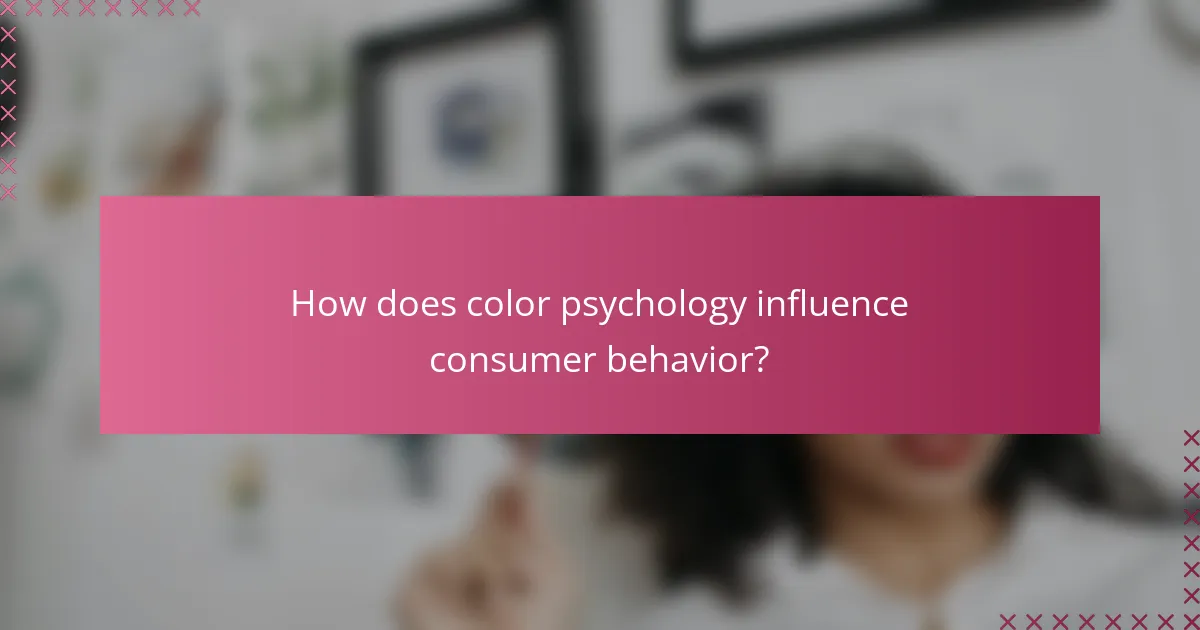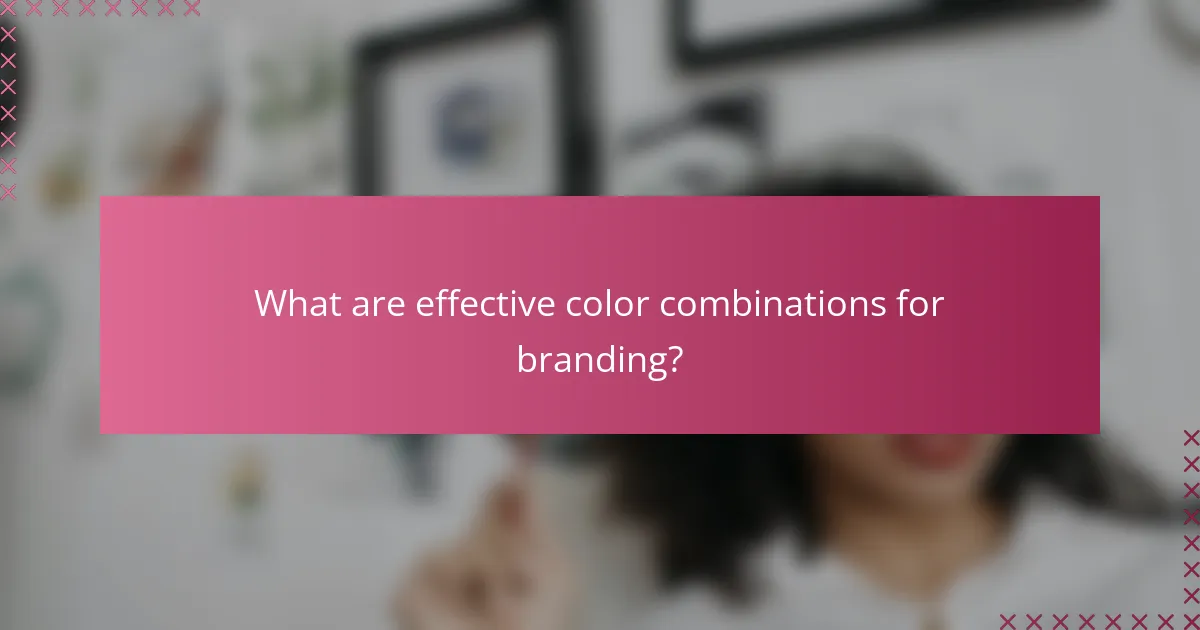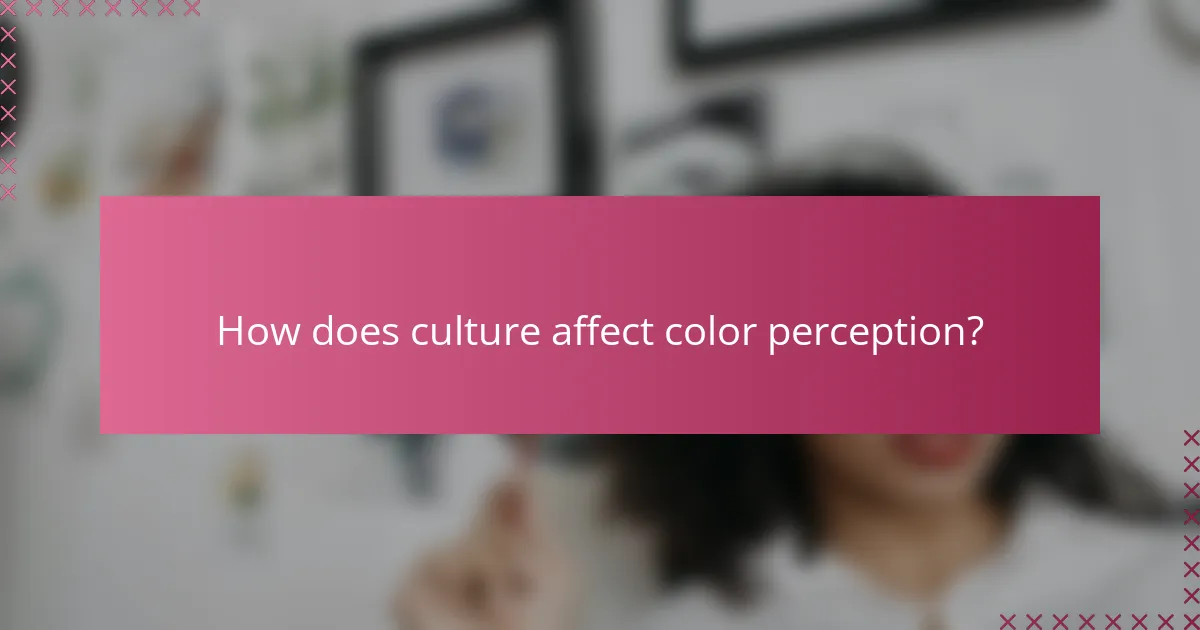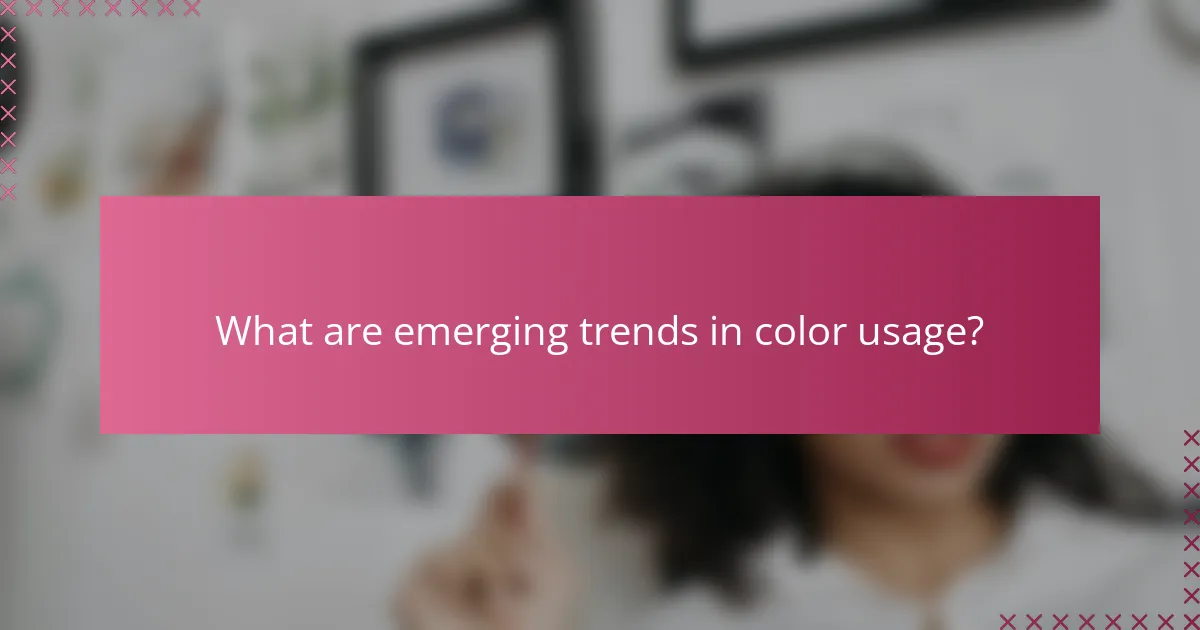Color theory plays a crucial role in understanding how colors influence human emotions and behaviors, particularly in marketing and branding. By strategically selecting color combinations, brands can create a compelling visual identity that resonates with their audience and drives consumer engagement. This understanding is essential for e-commerce platforms, where the right color choices can enhance user experience and impact purchasing decisions.

How does color psychology influence consumer behavior?
Color psychology significantly impacts consumer behavior by evoking emotions and influencing perceptions of brands. Different colors can trigger specific feelings, which can lead to purchasing decisions and brand loyalty.
Emotional responses to colors
Colors evoke strong emotional responses that can vary by culture and individual experience. For instance, red often generates feelings of excitement or urgency, making it effective for clearance sales, while blue tends to promote calmness and trust, often used by financial institutions.
Understanding these emotional triggers can help businesses tailor their marketing strategies. For example, a restaurant might use warm colors to stimulate appetite, while a spa might opt for softer hues to create a relaxing environment.
Color associations with brands
Many brands use specific colors to create a recognizable identity and convey their values. For example, green is commonly associated with health and sustainability, making it a popular choice for organic products, while black often signifies luxury and sophistication.
Consistent use of color in branding helps consumers form associations, which can enhance brand recall. A well-known example is Coca-Cola’s use of red, which has become synonymous with its brand image.
Impact on purchasing decisions
Color can significantly influence purchasing decisions, with studies suggesting that up to 85% of consumers base their buying choices on color alone. This underscores the importance of selecting the right color palette for products and marketing materials.
To maximize impact, businesses should consider their target audience’s preferences and cultural context. For instance, while white is often associated with purity in Western cultures, it can symbolize mourning in some Eastern cultures, which could affect consumer perception and sales.

What are effective color combinations for branding?
Effective color combinations for branding create a visual identity that resonates with the target audience and conveys the brand’s message. Choosing the right colors can enhance recognition, evoke emotions, and influence consumer behavior.
Complementary color schemes
Complementary color schemes involve pairing colors that are opposite each other on the color wheel, such as blue and orange or red and green. This combination creates high contrast, making it visually striking and attention-grabbing. Brands often use these schemes to highlight key elements, like logos or calls to action.
When using complementary colors, aim for balance; too much contrast can overwhelm the viewer. A good practice is to use one color as the dominant shade and the other as an accent to maintain harmony.
Analogous color palettes
Analogous color palettes consist of colors that are next to each other on the color wheel, such as blue, blue-green, and green. These combinations create a serene and cohesive look, making them ideal for brands that want to convey a sense of calm or unity. They work well in industries like wellness, beauty, and nature.
To effectively use analogous colors, select one dominant color and use the others for accents. This approach ensures a visually appealing design while maintaining a clear brand identity.
Monochromatic designs
Monochromatic designs utilize variations in lightness and saturation of a single color. This approach creates a sophisticated and clean aesthetic, often favored by luxury brands. For example, a brand might use different shades of blue to create depth while maintaining a unified look.
When implementing a monochromatic scheme, consider incorporating textures and patterns to add visual interest. This technique can prevent the design from appearing flat and enhance the overall brand experience.

How to choose colors for e-commerce websites?
Choosing colors for e-commerce websites involves selecting hues that enhance user experience, drive engagement, and align with brand identity. Effective color choices can significantly influence purchasing decisions and overall site usability.
Color contrast for readability
Color contrast is crucial for ensuring text and important elements are easily readable. High contrast between background and text colors improves visibility, which is essential for user engagement. Aim for a contrast ratio of at least 4.5:1 for normal text to meet accessibility standards.
For example, using dark text on a light background or vice versa can enhance readability. Tools like contrast checkers can help you evaluate your color combinations effectively.
Brand identity alignment
Your color choices should reflect your brand identity and values. Consistent use of specific colors can create a strong brand image and foster recognition among customers. For instance, blue often conveys trust, while red can evoke excitement.
Consider developing a color palette that includes primary and secondary colors representing your brand. This palette should be used consistently across your website and marketing materials to reinforce brand identity.
Target audience preferences
Understanding your target audience’s color preferences can significantly impact your e-commerce success. Different demographics may respond better to specific colors based on cultural associations or personal preferences. For example, younger audiences may favor vibrant colors, while older consumers might prefer muted tones.
Conducting surveys or analyzing competitors can provide insights into what colors resonate with your audience. Additionally, A/B testing different color schemes on your website can help determine which combinations lead to higher conversion rates.

What are the best practices for using color in marketing?
Effective use of color in marketing involves creating a consistent visual identity, testing color choices for impact, and adapting to seasonal trends. By understanding how colors influence perception and behavior, brands can enhance their messaging and connect better with their audience.
Color consistency across platforms
Maintaining color consistency across various marketing platforms is crucial for brand recognition. Use the same color palette on your website, social media, and print materials to create a cohesive look. This helps consumers easily identify your brand, fostering trust and familiarity.
To ensure consistency, create a brand style guide that includes color codes (like HEX or RGB values) and usage guidelines. This document should be accessible to all team members and partners involved in marketing efforts.
Testing color effectiveness
Testing the effectiveness of color choices can significantly impact marketing outcomes. Conduct A/B testing to compare different color schemes on ads or landing pages, measuring engagement and conversion rates. This data-driven approach allows you to identify which colors resonate best with your target audience.
Consider using tools like heat maps to visualize user interactions with different colors. Analyzing this data can reveal preferences and help refine your color strategy for maximum impact.
Seasonal color trends
Seasonal color trends can influence consumer behavior and purchasing decisions. For example, warm tones like red and orange are often associated with fall and winter promotions, while bright, vibrant colors may be more effective in spring and summer campaigns. Staying attuned to these trends can enhance your marketing efforts.
Monitor industry reports and design resources to keep up with emerging color trends. Incorporating seasonal colors into your marketing materials can create a sense of urgency and relevance, encouraging consumers to engage with your brand during specific times of the year.

How does culture affect color perception?
Culture significantly influences how individuals perceive and interpret colors. Different societies attribute unique meanings to colors, which can affect emotional responses and preferences.
Cultural color meanings
Colors often carry specific meanings that vary widely across cultures. For instance, in Western cultures, white is typically associated with purity and weddings, while in many Eastern cultures, it symbolizes mourning and funerals. Understanding these cultural associations is crucial for effective communication and marketing.
Additionally, red can symbolize love and passion in some cultures, while in others, it may represent danger or warning. Marketers and designers should consider these meanings to avoid misinterpretations and to resonate better with their target audience.
Regional color preferences
Regional preferences for colors can also differ, influenced by factors such as climate, environment, and local traditions. For example, bright colors may be favored in tropical regions, reflecting the vibrant natural surroundings, while muted tones might be more popular in colder climates.
When designing products or branding, it is essential to research local color trends. For instance, in the United States, blue is often seen as trustworthy and reliable, making it a common choice for corporate branding. In contrast, in some Asian markets, green may be preferred for its associations with health and prosperity.

What are emerging trends in color usage?
Emerging trends in color usage reflect a shift towards more intentional and strategic applications of color in design and branding. Designers are increasingly focusing on the psychological impact of colors, as well as the influence of cultural contexts and technological advancements.
Influence of technology on color choices
Technology significantly impacts color choices by providing tools that enhance color selection and application. Software like Adobe Color and various mobile apps allow designers to experiment with color palettes and visualize their effects in real-time, making it easier to create cohesive designs.
Additionally, the rise of digital media has led to a preference for vibrant, saturated colors that stand out on screens. Brands are adapting their color strategies to ensure visibility and engagement in an increasingly digital landscape, often opting for colors that evoke strong emotional responses.
When selecting colors for digital platforms, consider accessibility standards, such as contrast ratios, to ensure that designs are inclusive. Using tools to check color contrast can help avoid common pitfalls, such as poor visibility for users with visual impairments.
